Books by Luca Alessandri
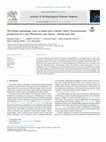
La Sassa cave (Sonnino, central Italy) is a recently investigated MIS 3 site of southern Latium, ... more La Sassa cave (Sonnino, central Italy) is a recently investigated MIS 3 site of southern Latium, a region characterised by a large number of caves and open-air Late Pleistocene sites. This paper describes the large faunal assemblage discovered at La Sassa cave, providing taphonomic and stratigraphic analyses which allow us to interpret the outer rooms of the cave as a cave hyena communal den and the inner area as a possibly coeval brown bear hibernating shelter. Archaeological evidence also indicates a human frequentation of the surrounding area occurred. In addition, a first environmental reconstruction of the area is provided based on faunal data. Results suggest a composite hilly landscape, with forests and grasslands interspersed by scrubland areas, rocky bands and wetlands, between the Pontine Plain and the modest peaks of the Ausoni Mountains. This contribution improves our palaeoecological perspective of the area around the time of the Last Glacial Maximum with intense human occupation.

Applied Geomatics (2020), May 12, 2020
In the geomatics field, modelling and georeferencing complex speleological structures are some of... more In the geomatics field, modelling and georeferencing complex speleological structures are some of the most challenging issues. The use of conventional survey methods (for example, those employing total stations or terrestrial laser scanner) becomes more difficult, especially because of the space constraints and the often critical light conditions. In this work, a flexible and swift methodology to survey an in-progress excavation is presented, through image-based modelling techniques. The proposed approach allows obtaining a reliable and georeferenced three-dimensional model of the underground environments, preserving the integrity of the scene. The 3D model is scaled and georeferenced through three ground control points located just outside the cave, using data acquired by a double-frequency GNSS receiver in static session mode. Further targets were employed to check the deformation of the model inside the cave. The surveys were conducted on two archaeological sites: La Sassa cave and Guattari cave, both located in southern Latium.
Castrum Inui. Il santuario di Inuus alla foce del Fosso dell'Incastro, Monumenti Antichi Lincei, 76 - serie misc. 21, 2017
'Between Satricum and Antium' presents a study carried out by the Groningen Institute of Archaeol... more 'Between Satricum and Antium' presents a study carried out by the Groningen Institute of Archaeology of the territories of two ancient settlements, both situated in the coastal landscape of ancient Latium on the Thyrrhenian seaboard, ca. 60 km south of Rome. Starting with the earliest traces of human presence in the Palaeolithic, the book deals in depth with the settlement dynamics in the area from the Middle Bronze age to the medieval period.
Systematic archaeological surveys, studies of existing site inventories and relevant artefact studies are all combined in this well-illustrated volume that provides a detailed account of the appearance of the first permanent dwellings during the Bronze and Iron Ages, of the rise of Archaic and Roman rural and maritime settlement and of the gradual process towards incastellamento during the Middle Ages.

The aim of this book is to present an in-depth analysis of the socio-economic dynamics that took ... more The aim of this book is to present an in-depth analysis of the socio-economic dynamics that took place from the Bronze Age until the middle of the eighth century BC, in the Latium Vetus (Italy). To understand the archaeological record, knowledge of the transformations through time of the various landscape units is necessary. Such knowledge was obtained by studying historical, geological and pedological maps, and by using air photography, pollen diagrams and soil augering as well as observations in the field. The presentation of the evidences takes the form of a catalogue that lists 232 sites: settlements, tombs (both isolated and necropoleis), hoards and ritual loci. This is the first time that all available archaeological evidence of the study area is catalogued in a single format. Furthermore, a number of locational variables for each site were analysed, using GIS techniques and statistical analysis, in order to identify certain tendencies in the location of settlements. A functional analysis of the catalogued sites was also conducted considering the potential natural harbours along the coast and evaluating the agricultural potential of the sites’ territories. In the concluding chapter an up-to-date explanation of the emergence of social inequality and the warrior elite is proposed as well as a global (proto)history of the subsistence economy and settlement patterns in the Bronze Age and Iron Age. In addition, a new and simple method is suggested for reconstructing the territories of the ancient protohistoric polities.
This work helps provide a better understanding, in particular for the coastal part of central sou... more This work helps provide a better understanding, in particular for the coastal part of central south Lazio, Italy, of the development of new socio-economic forms. Rooted in the ancient Bronze Age, these would, in the relatively short period of protohistory, lead from a society functioning on an essentially kinship basis to one dominated by true hegemonic aristocracies. The study area includes the Tiber Delta, the co-called Latial Volcano, and the Pontine Plain.
Papers by Luca Alessandri

As today, in antiquity the importance of coastal and deltaic environments lay in the sea’s integr... more As today, in antiquity the importance of coastal and deltaic environments lay in the sea’s integrating role in the subsistence, resources, and trade opportunities of its people. For the first large towns of the late Bronze/early Iron Age in Central Italy, salt was an indispensable commodity being the only means available to preserve food, both for consumption and trade. It was produced in the coastal areas but the early production sites, techniques employed, and trade are still uncertain/poorly understood. In the southern part of the Tiber delta palaeo-lagoon of Ostia, at the archeological site of Piscina Torta, heaps made of hundreds of thousands of potsherds were found, possibly related to the salt production technique known as briquetage and pointing at the existence of a major early salt production and trading industry. This coastal area likely holds an outstanding record of the Late Holocene paleoenvironmental changes and of the interaction between climatic variations and coastal processes in an area actively modified and adapted by human activity. An intensive coring campaign at the site and subsequent analyses led to the identification of three stages in the development of the lagoon and its palaeo-inlet towards the sea. During the first phase, the lagoon was well connected to the sea and filled with marine sands. Later on, the inlet was blocked by a newly formed beach ridge, and peat accumulation started. During this second stage, the margins of both the lagoon and inlet were characterized by a highly evaporative environment with carbonate precipitation. Most probably, these sediments were used and leached for producing the brine needed for the salt production by briquetage, a method which consists in boiling such brine in typical reddish jars to obtain a salt cake. Furthermore, heaps composed of both inlet fill, and pottery found around the archeological site suggest how the channel connecting the sea with the lagoon may have been modified by anthropic activities. In a last (third) phase, presumably of medieval age, a marine transgression led to inundation of the lagoon and deposition of highly fossiliferous fine textured sediments.In this contribution, we show the results of a detailed geochemical and micropaleontological analysis (benthic foraminifers) of a continuous section sampled in the ancient lagoon of Ostia, in the form of a paleoenvironmental reconstruction of the area before, during and after its human occupation. Radiocarbon dates provide a firm time frame for the palaeo-lagoon evolutionary phases, while grain size analyses performed both on the inlet fill and the sediment heaps found at the site, revealed new details regarding the human modification of the landscape.
DOAJ (DOAJ: Directory of Open Access Journals), Feb 1, 2022
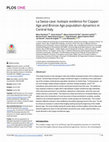
PLOS ONE
This study focuses on the changes in diet and mobility of people buried in the La Sassa cave (Lat... more This study focuses on the changes in diet and mobility of people buried in the La Sassa cave (Latium, Central Italy) during the Copper and Bronze Ages to contribute to the understanding of the complex contemporary population dynamics in Central Italy. To that purpose, carbon and nitrogen stable isotope analyses, strontium isotope analyses, and FT-IR evaluations were performed on human and faunal remains from this cave. The stable isotope analyses evidence a slight shift in diet between Copper and Bronze Age individuals, which becomes prominent in an individual, dating from a late phase, when the cave was mainly used as a cultic shelter. This diachronic study documents an increased dietary variability due to the introduction of novel resources in these protohistoric societies, possibly related to the southward spread of northern human groups into Central Italy. This contact between different cultures is also testified by the pottery typology found in the cave. The latter shows an inc...

The Holocene
The Pontine Marshes (Central Italy) are known for their long drainage history starting early in R... more The Pontine Marshes (Central Italy) are known for their long drainage history starting early in Roman times and culminating in their reclamation ( bonifica integrale) by the Fascist’s regime under Mussolini, mostly in the 1930s of past century. The geology of this coastal wetland and causes for its drainage problems received limited attention till recently. We reviewed results from recent studies, identified still existing knowledge gaps and performed additional research to fill these, to produce a full description of the Holocene history and drainage of these marshes. Massive coring data that served to map the soils and surficial geology, observations in archaeological excavations, analytical data on soil and sediment characteristics, and radiocarbon datings allowed us to distinguish several phases in this history, with a main break in the early Roman Republican period with the first systematic drainage works. Earlier, natural processes brought about by sea level rise largely contr...
The International Archives of the Photogrammetry, Remote Sensing and Spatial Information Sciences
Italy-(valerio.baiocchi, felicia.monti)@uniroma1.it 3 Soprintenza archeologica Belle arti e paesa... more Italy-(valerio.baiocchi, felicia.monti)@uniroma1.it 3 Soprintenza archeologica Belle arti e paesaggio per le Provincie di Frosinone e Latina, Italy
Journal of Physics: Conference Series
The greatest part of the documents concerning the last reclamation scheme of the Pontine Plain is... more The greatest part of the documents concerning the last reclamation scheme of the Pontine Plain is now stored in a section of the state archive and in the archive of the Consorzio di Bonifica dell’Agro Pontino, both located in Latina (Italy). Detailed plans of the realised buildings, infrastructures as well as thousands of pictures of the environments before the reclamation scheme are available to the public. These data can be used to reconstruct the ancient landscape before the major changes which occurred after the spread of mechanical vehicles for earthmoving in the 1970s. The reconstruction maps can be used to set the proper background for the archaeological research in the area.
Journal of Physics: Conference Series
An intersection of two roman glareatae roads and an underground stretch of a Roman aqueduct (rivu... more An intersection of two roman glareatae roads and an underground stretch of a Roman aqueduct (rivus subterraneus) were found in the locality of Colle Oliva, during an emergency archaeological investigation (between 11/2018 and 3/2019). The aqueduct has been detected in several test trenches and some profiles have been obtained. These data shade some light about the Roman hydraulic technology and they show how the land morphology affected the shape and the path of the aqueduct.
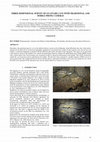
The International Archives of the Photogrammetry, Remote Sensing and Spatial Information Sciences, 2019
Sometimes, the georeferencing of a cave in the global reference system can be challenging. Some d... more Sometimes, the georeferencing of a cave in the global reference system can be challenging. Some difficulties may arise when narrow passages do not allow the use of classical topographic equipment or a terrestrial laser scanner. In these specific cases, the surveyor can employ a visual-based approach to produce both the followed path and the 3D model of the hypogeum. The report we are presenting is the result of a survey in the Guattari cave carried out using images taken by a Huawei P9 mobile phone and a Nikon D800E camera with a 16mm fisheye lens. Several targets were measured in order to contain the deformation of the models. Three GCPs located just outside the cave have been used to georeference the models. The data have been acquired by a double frequency GNSS receiver in static session mode. The comparison between the two models shows a substantial concordance only in the area outside the cave where the GCPs were measured. In the innermost areas, the two models differ by as much as two meters.
Proceedings of the 2022 IMEKO TC4 International Conference on Metrology for Archaeology and Cultural Heritage
Journal of Archaeological Science: Reports
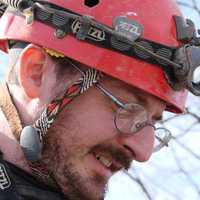



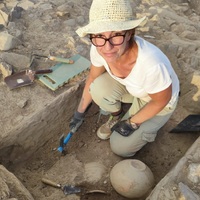






Uploads
Books by Luca Alessandri
Systematic archaeological surveys, studies of existing site inventories and relevant artefact studies are all combined in this well-illustrated volume that provides a detailed account of the appearance of the first permanent dwellings during the Bronze and Iron Ages, of the rise of Archaic and Roman rural and maritime settlement and of the gradual process towards incastellamento during the Middle Ages.
Papers by Luca Alessandri
Systematic archaeological surveys, studies of existing site inventories and relevant artefact studies are all combined in this well-illustrated volume that provides a detailed account of the appearance of the first permanent dwellings during the Bronze and Iron Ages, of the rise of Archaic and Roman rural and maritime settlement and of the gradual process towards incastellamento during the Middle Ages.
PAROLE CHIAVE: età del Bronzo, età Romana, Avellino evento, Sezze, Forum Appii, Ad Medias, Pontine plain, archeologia dei paesaggi, paleogeografia.
remains were first discovered by in 2014. The cave was mapped in 2014 and 2015, during which Bronze Age pottery and bone fragments were found. A human tibia fragment was radiocarbon dated to the Copper Age. A first excavation was conducted in the summer of 2016 by a joint research team of archaeologists of the Groningen Institute of Archaeology and the Università di Roma “Tor Vergata”, hoping to find evidence for profound demographic and cultural change following the Vesuvius eruption of ca. 1900 BC. Additionally, experimental geophysical work was carried out in search of a possibly collapsed entrance tunnel. The excavations continued in the summer of 2017. We here present the preliminary results of the 2016 excavations and geophysical measurements, and look ahead to future investigations of the cave.
production modes in their specific environmental and geographical contexts.